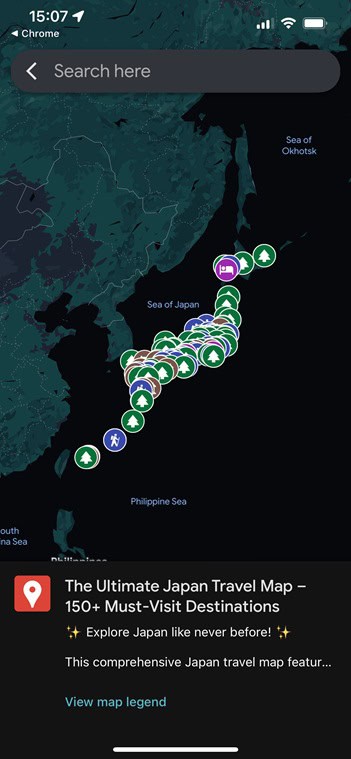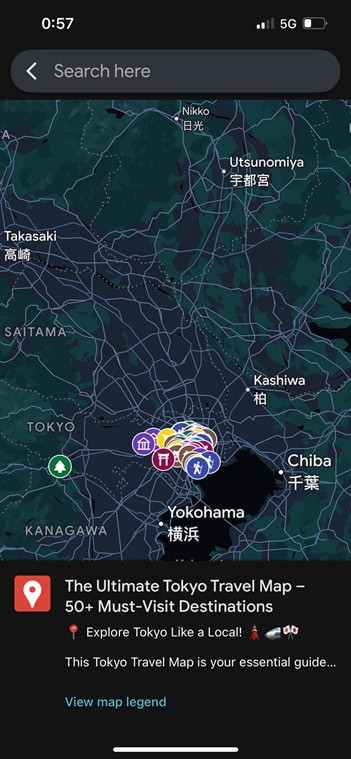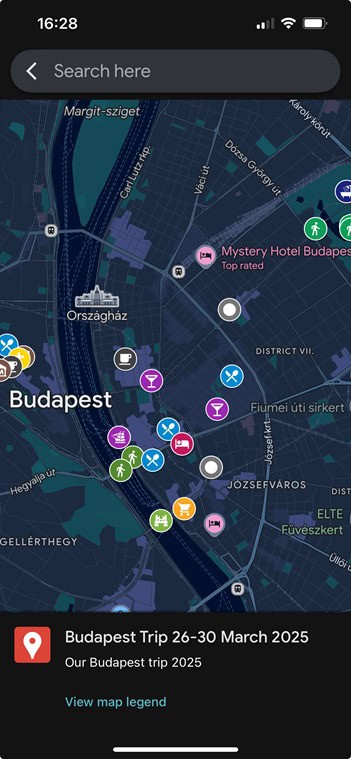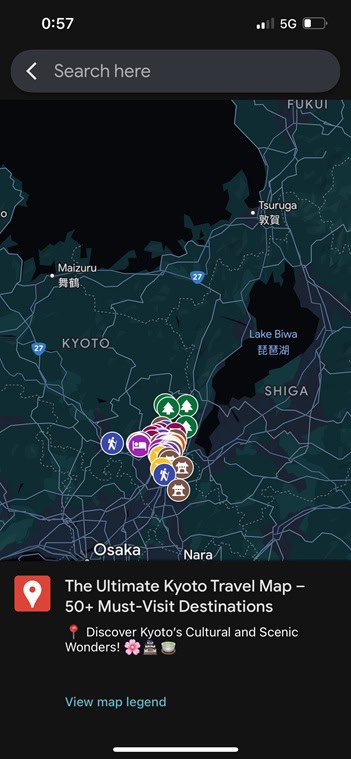Introduction – Stepping Into Japan for the First Time
There’s something magical about planning a trip to Japan. The promise of cherry blossoms, neon-lit nights in Tokyo, serene temples in Kyoto, and steaming bowls of ramen is enough to fill anyone with wanderlust. But if you’re visiting Japan for the first time, that excitement might come with a touch of nervousness too. Questions swirl: How do trains work? What’s polite here? Will I offend someone without knowing?
We get it. Japan is wondrous, but also uniquely different in ways that can feel overwhelming—especially when you’re traveling with family or trying to make every moment count.
The good news? With a bit of guidance and cultural insight, your Japan adventure can be as smooth as it is spectacular. Whether you’re a curious explorer chasing cultural gems, or a parent planning a memory-filled family trip, this guide is here to help you feel confident, respectful, and fully ready to dive in.
Let’s make your first trip to Japan unforgettable—for all the right reasons.
TL;DR (Too Long; Didn’t Read)
First time in Japan? This guide covers everything you need to know—from local etiquette and language tips to train travel, money matters, and where to stay. It’s built for families, cultural explorers, and curious travelers looking for a smooth, respectful, and enriching experience. You’ll also find handy tools, booking advice, and smart travel hacks to help you plan with confidence.
Get Your FREE London Travel Map + 5 Must-Have Travel Resources!
Plan smarter, stress less, and make every trip unforgettable with these exclusive tools—100% FREE!
📩 Sign up now & download instantly!

1. Understand the Rhythm of Japan – Cultural Etiquette & Social Norms
Respectful Behaviors That Go a Long Way
One of the most beautiful aspects of Japanese culture is its deep-rooted respect—for people, places, and shared spaces. As a traveler, showing cultural awareness doesn’t just help you avoid awkward moments—it earns you genuine appreciation from locals.
- Bowing: It’s the universal gesture of greeting and gratitude. A simple nod or a slight bow is enough. You don’t need to overthink it—just be sincere.
- Shoes off inside: Always remove your shoes before entering someone’s home, traditional ryokans, temples, and some restaurants. You’ll often see slippers provided.
- Quiet courtesy: Whether in a train car, museum, or hotel lobby, quietness is valued. Keep phone calls and loud conversations to a minimum in public spaces.
Dining Etiquette 101
Eating in Japan is more than satisfying—it’s sacred. Respecting food culture here means embracing small customs.
- Slurp away: Especially noodles! It’s not only okay to slurp ramen or soba—it shows appreciation.
- Tipping? Not here. In fact, leaving a tip can be confusing or even awkward for staff. Prices include service.
- Use two hands when handing over credit cards or receiving change. It’s a subtle gesture of politeness.
Onsen Etiquette (Hot Springs)
Onsens are a rite of passage in Japan, and nothing beats soaking in a hot spring after a day of sightseeing. Just be sure to:
- Wash thoroughly before entering the bath.
- Bathe nude—swimsuits are not allowed.
- Avoid bringing towels into the water.
- Check tattoo rules: Some onsens prohibit tattoos, though others now offer tattoo-friendly or private options.
For a smooth intro to onsen life, consider Hakone or Noboribetsu—both scenic, welcoming, and traveler-friendly.
2. Communication Made Simple – Language Tips & Tech Tools
English in Japan: What to Expect
While English signage is common in major cities like Tokyo and Osaka, spoken English proficiency varies. In rural areas, it’s less common—though you’ll find locals very willing to help, even if communication takes a little creativity.
At airports, hotels, train stations, and major attractions, you’ll usually find English-speaking staff or English menus. Still, a little effort in Japanese goes a long way.
Must-Know Japanese Phrases (With Context)
Here are a few handy phrases to make your journey smoother:
- Konnichiwa (こんにちは) – Hello/Good afternoon
- Arigatou gozaimasu (ありがとうございます) – Thank you (polite)
- Sumimasen (すみません) – Excuse me / I’m sorry
- Eigo o hanasemasu ka? (英語を話せますか?) – Do you speak English?
Write them down, or better yet, save them in your notes app.
Download These Apps
Tech will be your best travel buddy in Japan. Here are must-haves:
- Google Translate (with offline language pack) – Great for menus and signage
- Google Maps or Japan Travel by NAVITIME – Route planning with transit accuracy
- Airalo or Yesim – eSIM apps that let you activate mobile data before or as soon as you land. No fumbling for Wi-Fi passwords or local SIM cards.
These apps help eliminate stress and keep you connected on the go.
3. Currency, Payments & Budgeting in Japan
Cash Is Still King
Yes, Japan is futuristic—but when it comes to payments, cash is surprisingly dominant, especially at local shops, street food vendors, and rural accommodations.
- Tip: Always carry some yen. Even in Tokyo, smaller eateries might not take cards.
- Look for 7-Eleven ATMs, which reliably accept foreign debit and credit cards.
Avoid Exchange Rip-Offs
Skip the currency exchange booths at the airport. Instead, use Wise, which offers the real exchange rate with low fees. You can:
- Convert funds in advance from your home currency
- Spend with the Wise card in yen (or withdraw from ATMs)
- Track spending via the app—ideal for staying on budget
Wise is a smart, secure solution that many first-time travelers now swear by.
IC Cards & Prepaid Options
IC cards like Suica or Pasmo (Tokyo) and ICOCA (Kansai) are a lifesaver for getting around—and even for convenience store purchases.
- Tap to ride trains, metros, and buses
- Reload at machines or kiosks
- Use in vending machines, stores, and even some restaurants
You can even preload one before arriving through travel platforms.
Need More Help Planning Your Trip?
4. Getting Around Like a Local – Transportation Tips
Bullet Trains (Shinkansen) & the JR Pass
Shinkansen are iconic—and efficient. They connect most major cities in style, speed, and comfort.
- Should you get a JR Pass?
If you’re planning multiple long-distance journeys (like Tokyo → Kyoto → Osaka → Hiroshima), then yes—it pays for itself fast. - JR Passes need to be activated in Japan, but can be purchased online in advance.
- Seat reservations are recommended during peak seasons (spring, summer holidays, and New Year).
Local Subways & Buses
Big cities like Tokyo, Kyoto, and Osaka have intricate subway systems—but they’re clean, punctual, and safe.
- Use your IC card to tap in/out
- Google Maps works well for route planning
- City buses are popular in Kyoto—especially near temples and less connected areas
Getting From the Airport to Your Hotel
Arriving in Japan? Here’s how to get into the city efficiently:
- Narita Airport to Tokyo: Take the Narita Express (N’EX) to Tokyo Station (55 min)
- Haneda Airport to Tokyo: Ride the Tokyo Monorail to Hamamatsucho Station (13 min)
- Kansai Airport to Kyoto: Use the Haruka Express for a direct ride
Taxis exist, but they’re pricey. Stick to public transport unless you’re arriving late or with lots of luggage.
5. Where to Stay on Your First Trip – Top Cities & Areas
Choosing the right home base is key to enjoying your trip with minimal commute stress. Here’s where first-timers tend to thrive:
Tokyo
- Shinjuku – Lively, central, great for shopping and transport access
- Shibuya – Trendy, young vibe, perfect for food and fashion
- Asakusa – More traditional, close to temples and the Sumida River
Kyoto
- Gion – Geisha charm, traditional Kyoto at its best
- Arashiyama – Near the Bamboo Grove and monkey park
- Kyoto Station Area – Great transport hub with many hotel options
Osaka
- Namba – Heart of food, nightlife, and Dotonbori lights
- Umeda – Skyscrapers, shopping, and central station access
Tips for Choosing Accommodation
- Stay near train stations—it will save tons of time and energy
- Consider a ryokan for a night or two for a cultural deep dive
- Traveling with kids? Look for family-sized rooms in areas like Odaiba (Tokyo) or Universal City (Osaka)
🛏️ Where to Stay Near Tokyo & Kyoto
Hotel Groove Shinjuku (Tokyo)
📍 In lively Shinjuku—steps from shopping, trains, and airport buses. ✨ Family-friendly suites with tatami-style floors, on-site laundry, and a restaurant/bar. Book via Trip.com
Cyashitsu Ryokan Asakusa (Tokyo)
📍 In historic Asakusa near Senso‑ji Temple. ✨ A traditional ryokan stay—private bathrooms, open-air bath, and cultural ambience with modern comfort. Book via Trip.com
Gion Ryokan Q‑beh (Kyoto)
📍 Right in picturesque Gion—walking distance to Yasaka Shrine and Kiyomizu‑dera. ✨ Authentic tatami rooms, family-sized options, and a serene garden with shared kitchen. Book via Booking.com
💡 Tip: These popular stays fill up fast—especially during cherry blossom and autumn foliage season. Book early to secure your ideal location and room type!
🗺️ Planning Your Japan Itinerary Just Got Easier
Not sure how to organize Tokyo, Kyoto, Osaka, and maybe a few hidden gems? Our AI-powered tool creates a custom day-by-day travel plan based on your dates, interests, pace, and travel style — perfect for families, cultural explorers, or first-timers who just want it all to make sense.
🎌 Stress-free planning for your Japan adventure starts now:
Discover Our Ultimate Collection of Travel Maps
6. Food Adventures Without the Stress
Easy Eats for First-Timers
Japan’s culinary scene is a dream—but it can be a little intimidating when everything’s in kanji or menus are pictureless. Don’t worry. Japan is surprisingly accommodating once you know where to look.
- Conveyor Belt Sushi (Kaitenzushi): Try chain favorites like Sushiro or Kura Sushi for a fun, affordable, and kid-friendly experience.
- Ramen Chains: Ichiran, Ippudo, and Afuri serve up iconic bowls with English instructions.
- Convenience Stores (Konbini): 7-Eleven, Lawson, and FamilyMart aren’t just for snacks—they offer fresh bento meals, onigiri, and coffee.
They’re budget-friendly, open late, and perfect for busy travel days.
Dietary Restrictions in Japan
Vegetarian or gluten-free? Japan can be tricky but not impossible.
- Use Google Translate camera mode to scan ingredients.
- Look for macrobiotic or “shojin ryori” (Buddhist vegetarian cuisine) in Kyoto.
- Some ramen shops now offer plant-based broths—check HappyCow or ask staff.
Restaurant Tips
- Vending machine ordering: Common in ramen shops. Just insert money, select your dish, and hand the ticket to the chef.
- Water is free and often self-serve.
- Line culture: A queue outside means it’s worth the wait.
7. Booking Attractions & Activities the Smart Way
Plan Ahead, Especially for Popular Sites
Japan has some bucket-list experiences that book out fast—especially in peak seasons (cherry blossoms in spring and koyo leaves in autumn).
Top spots to pre-book:
- Ghibli Museum (tickets open 1 month ahead)
- Shibuya Sky observation deck
- teamLab Planets (especially in Tokyo)
Skip-the-Line & Tour Platforms
Save time and energy by booking trusted tours or tickets online.
Even if you’re a DIY traveler, platforms like Viator, Klook, Tiqets, and GetYourGuide help avoid confusion, language barriers, and long queues (Note: Klook is especially strong in Asia).
Family-Friendly & Cultural Experiences
Some standout experiences that are great for families and cultural explorers alike:
- Tea ceremonies in Kyoto
- Sushi-making classes in Osaka
- Kimono rentals and walking tours
- Samurai sword lessons or ninja experiences for kids
🎟️ Ready to secure your Japan experiences?
From tea ceremonies in Kyoto to family-friendly sushi workshops in Osaka, many top-rated experiences mentioned above can be booked in advance through platforms like Klook. It’s a trusted choice for skip-the-line access, language support, and curated local tours throughout Japan.
If tickets are unavailable there, be sure to check the official websites of each attraction for the latest availability, opening hours, or on-site options.
8. Japan Packing & Seasonal Tips
What to Pack Year-Round
- Slip-on shoes: For temples, restaurants, and ryokans
- Portable Wi-Fi or eSIM: Stay connected with Yesim or Airalo
- Travel adapter: Japan uses Type A/B plugs at 100V
- Hand towel: Many public bathrooms lack paper towels
- Reusable shopping bag: Plastic bags are often charged
Season-Specific Advice
- Spring (Mar–May): Allergy meds, lightweight layers, camera for sakura!
- Summer (Jun–Aug): Sunscreen, hat, cooling towels, light clothing
- Autumn (Sep–Nov): Light jacket, umbrella, camera for fall foliage
- Winter (Dec–Feb): Heat packs, thermals, warm coats
- You can explore our full Japan seasonal guide here.
Travel Insurance Reminder
Unexpected things happen. From flight cancellations to illness, travel insurance provides peace of mind—especially in a country known for outdoor adventures and strict medical costs.
Providers like EKTA Travel Insurance and VisitorsCoverage offer flexible plans suited to families, solo travelers, and everyone in between.

Test Your Travel Smarts with Our Quizzes!
Think you know your way around the world? From cultural traditions to hidden gems, our short and playful travel quizzes are the perfect way to challenge yourself, learn something new, and maybe even spark your next adventure. Great for anyone who loves a bit of travel trivia fun!
Memorable Mentions – Things First-Timers Often Miss
Here’s what seasoned travelers wish they knew earlier:
- Free Wi-Fi isn’t guaranteed: Train stations might have it, but it’s spotty. Use an eSIM or pocket Wi-Fi.
- Temples open early: Visit at 7 AM to avoid crowds and enjoy peaceful atmospheres.
- Vending machines are everywhere: Hot coffee, iced tea, ramen—you name it.
- Day trips are a must: Easy escapes like Hakone, Nikko, or Nara add depth to your itinerary.
- Luggage delivery service: Takuhaibin lets you forward bags between hotels for stress-free travel—especially helpful for families.
Conclusion – Your First Japan Adventure Awaits
Traveling to Japan for the first time is a journey of contrast, beauty, and unforgettable discovery. Yes, it’s a place of ancient temples and futuristic trains, but it’s also a land where quiet politeness and immersive culture can take you by surprise.
Let this post be your companion in navigating those first steps. Whether you’re traveling solo, with a partner, or wrangling kids in tow—know that Japan will reward your curiosity and preparation with moments you’ll remember forever.
Plan Your Ultimate Japan Trip
FAQs: Japan Travel Tips for First-Time Visitors
Q: Is Japan a good destination for first-time travelers with kids?
A: Absolutely. Japan is clean, safe, and efficient—making it a great option for families. Cities like Tokyo and Osaka have child-friendly attractions, and public transport is reliable even with strollers. Look for hotels near train stations and consider areas like Odaiba (Tokyo) or Universal City (Osaka) for easier family logistics.
Q: How much cash should I carry when visiting Japan?
A: While Japan is modern, many places—like small eateries, temples, and rural accommodations—still prefer cash. It’s wise to carry around ¥10,000–¥20,000 for daily expenses. ATMs at 7-Eleven are the most foreign card-friendly.
Q: Do I need to speak Japanese to get around Japan?
A: Not necessarily. In major cities and tourist spots, signs are often in English, and many people are helpful even if they don’t speak fluently. Still, learning a few basic phrases and using tools like Google Translate or Airalo for mobile data can be a huge help.
Q: Should I buy a JR Pass for my trip?
Q: Is Wise a good option for exchanging and spending money in Japan?
A: Yes. Wise offers competitive exchange rates and low fees, making it a smart way to convert and spend yen. You can use the Wise card in shops or withdraw cash at ATMs, and track everything through the app.
Q: What are Japan’s peak travel seasons and how can I avoid the crowds?
A: The busiest times are spring (March–April for cherry blossoms), summer holidays, and autumn (October–November for foliage). Travel early in the day, visit less-touristy areas, and book popular spots in advance—especially during festivals and public holidays.
Q: How can I book cultural experiences or skip-the-line tickets in Japan?
A: For convenience and peace of mind, platforms like Klook, Viator, and GetYourGuide offer advance bookings for top experiences, from tea ceremonies to observation decks. These tools help bypass language barriers and save time during your trip.
Q: Are there any tips for eating out in Japan with dietary restrictions?
A: Yes. While vegetarian and gluten-free options are limited, they are growing. Use Google Translate to scan ingredients, and check HappyCow for plant-based restaurants. In Kyoto, look for Buddhist “shojin ryori” cuisine, which is vegetarian by tradition.
📌 Love cultural travel? Explore more ideas on Pinterest →













